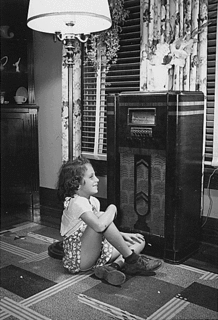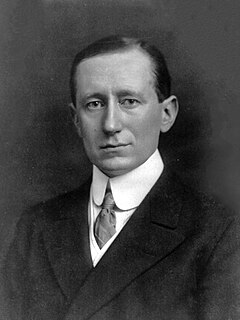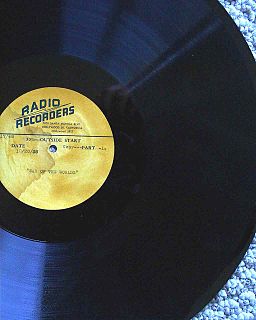
Radio drama is a dramatized, purely acoustic performance. With no visual component, radio drama depends on dialogue, music and sound effects to help the listener imagine the characters and story: "It is auditory in the physical dimension but equally powerful as a visual force in the psychological dimension." Radio drama includes plays specifically written for radio, docudrama, dramatized works of fiction, as well as plays originally written for the theatre, including musical theatre, and opera.

The Golden Age of Radio, also known as the old-time radio (OTR) era, was an era of radio in the United States where it was the dominant electronic home entertainment medium. It began with the birth of commercial radio broadcasting in the early 1920s and lasted through the 1950s, when television gradually superseded radio as the medium of choice for scripted programming, variety and dramatic shows.
Christian radio is a Christian media radio format that focus on programming with a Christian message. Many such broadcasters play contemporary Christian music, though many programs include sermons, radio dramas, as well as news and talk programming covering popular culture, economic, and political topics from a Christian perspective.

BBC Radio is an operational business division and service of the British Broadcasting Corporation. The service provides national radio stations covering the majority of musical genres, as well as local radio stations covering local news, affairs and interests. It also oversees online audio content.
Texaco Star Theater was an American comedy-variety show, broadcast on radio from 1938 to 1949 and telecast from 1948 to 1956. It was one of the first successful examples of American television broadcasting, remembered as the show that gave Milton Berle the nickname "Mr. Television".
There are two types of radio network currently in use around the world: the one-to-many broadcast network commonly used for public information and mass-media entertainment, and the two-way radio type used more commonly for public safety and public services such as police, fire, taxicabs, and delivery services. Cell phones are able to send and receive simultaneously by using two different frequencies at the same time. Many of the same components and much of the same basic technology applies to all three.

CKLW is a commercial AM radio station in Windsor, Ontario, serving Southwestern Ontario and Metro Detroit. CKLW has a news/talk format. It features local hosts in morning and afternoon drive times, with syndicated Canadian hosts in middays and evenings, including Evan Solomon and Jamil Jivani. Evening newscasts are simulcast from CHWI-DT Channel 16 CTV Windsor.

Television is one of the major mass media of the United States. As of 2011, household ownership of television sets in the country is 96.7%, with approximately 114,200,000 American households owning at least one television set as of August 2013. The majority of households have more than one set. The peak ownership percentage of households with at least one television set occurred during the 1996–97 season, with 98.4% ownership.

It is generally recognized that the first radio transmission was made from a temporary station set up by Guglielmo Marconi in 1895 on the Isle of Wight. This followed on from pioneering work in the field by a number of people including Alessandro Volta, André-Marie Ampère, Georg Ohm and James Clerk Maxwell.
The Gillette Cavalcade of Sports is an American radio-turned-television program by the National Broadcasting Company (NBC) that ran from 1942 to 1960. The program included broadcasts of a variety of sports, although it is primarily remembered for its focus on boxing matches.
A television special is a standalone television show that temporarily interrupts episodic programming normally scheduled for a given time slot. Some specials provide a full range of entertainment and informational value available via the television medium, in various formats, and in any viewing lengths.

Television in Australia began experimentally as early as 1929 in Melbourne with radio stations 3DB and 3UZ, and 2UE in Sydney, using the Radiovision system by Gilbert Miles and Donald McDonald, and later from other locations, such as Brisbane in 1934.
Radio broadcasting in the United States has been used since the early 1920s to distribute news and entertainment to a national audience. By 1931, a majority of U.S. households owned at least one radio receiver. It was the first electronic "mass medium" technology, and its introduction, along with the subsequent development of sound films, ended the print monopoly of mass media. During the Golden Age of Radio it had a major cultural and financial impact on the country. However, the rise of television broadcasting in the 1950s relegated radio to a secondary status, as much of its programming and audience shifted to the new "sight joined with sound" service.
WHUS is a non-commercial educational FM college radio station. It transmits with 4,400 watts on 91.7 MHz from the University of Connecticut (UConn) in Storrs to audiences in Connecticut, southern Massachusetts and western Rhode Island. WHUS operates 24 hours a day, 365 days a year as a community radio station that features members of the student body and the local community.
In the United States, commercial radio stations make most of their revenue by selling airtime to be used for running radio advertisements. These advertisements are the result of a business or a service providing a valuable consideration, usually money, in exchange for the station airing their commercial or mentioning them on air. The most common advertisements are "spot commercials", which normally last for no more than one minute, and longer programs, commonly running up to one hour, known as "informercials".
Live radio is radio broadcast without delay. Before the days of television, audiences listened to live dramas, comedies, quiz shows and concerts on the radio much the same way that they now do on television. Most talk radio is live radio where people can speak (anonymously) about their opinions and lives. Live radio is sound transmitted by radio waves, as the sound happens. Modern live radio is probably most used to broadcast sports but it is also used to transmit local news and traffic updates. Most radio that we listen to today is recorded music, and the days of solely live broadcast music are generally not as present.
A sustaining program is a radio or television program that, despite airing on a commercial broadcast station, does not have commercial sponsorship or advertising. This term, mostly used in the United States, was common in the early days of radio, but has become unfamiliar, due to the nearly universal use of commercial advertising on radio and television.

Radio Luxembourg was a multilingual commercial broadcaster in Luxembourg. It is known in most non-English languages as RTL.

Gene Autry's Melody Ranch is a Western variety radio show in the United States. A 15-minute pilot show aired on December 31, 1939. The program ran from January 7, 1940 to August 1, 1943, and from September 23, 1945 to May 16, 1956. The show's entire run was broadcast over the CBS radio network, sponsored by Doublemint gum. The approximately two-year interruption resulted from Autry's enlistment in the United States Army to serve in World War II. Initially titled Doublemint's Melody Ranch, the show's name was changed to Gene Autry's Melody Ranch in early 1941. Episodes were 30 minutes long except for a 15-minute version that ran from September 23, 1945 to June 16, 1946. The theme song was "Back in the Saddle Again".

Electrical transcriptions are special phonograph recordings made exclusively for radio broadcasting, which were widely used during the "Golden Age of Radio". They provided material—from station-identification jingles and commercials to full-length programs—for use by local stations, which were affiliates of one of the radio networks.









